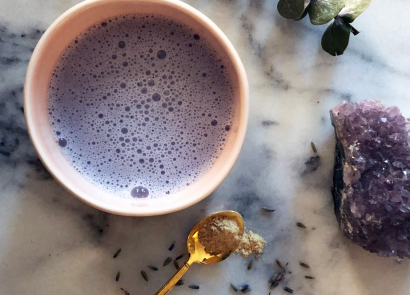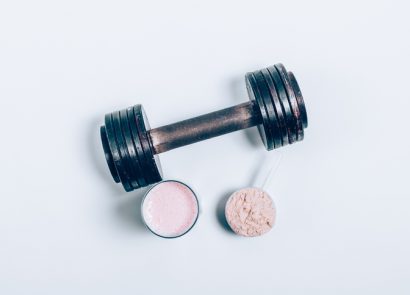Maryon Stewart’s guide to managing the menopause will help you to tackle the transition with ease
The menopause is a milestone in every woman’s life. We may greet it with relief as an end to the tyranny of premenstrual syndrome, contraception, periods, and migraines, or we may regret the loss of fertility in the acknowledgment of ageing. Most women feel a mixture of emotions, but what we really want is information about the process. We want to know what options are available so that we can make informed decisions about our future health and feel comfortable with our choices.
1. Do aerobic exercise
The benefits of exercise for menopausal symptoms cannot be overstated. Increased mental alertness, more energy and vitality, the ability to perform daily tasks without getting breathless or tired, greater flexibility, faster reaction times, increased immunity and stronger bones are just some of the many advantages you’ll gain from regular movement. Exercise is also a great stress buster. Yes, it requires time and effort, but it’s a small price to pay for such huge rewards. It’s even more important to be positive about exercise now than when you were younger. Anything that gets you moving will help improve your energy levels and reduce symptoms of depression, anxiety and insomnia, plus boost your confidence, self-esteem, and wellbeing. Aerobic exercise – anything that increases your heart rate and breathing – helps protect against heart disease. Weight-bearing exercise – moderate-impact activities in which you support your own body weight, such as walking, jogging, dancing, or tennis, and working your upper body through strength training – helps strengthen your bones and protects against osteoporosis. Simply dancing to your favourite music will help release endorphins (the feelgood hormones) and speed up your metabolism, helping shed the extra pounds we gain at midlife, too.
2. Turn down the temp
Wear loose-fitting nightwear made from natural fabrics such as silk, cotton or wool. Open the windows and keep your bedroom as cool as you can. Between 58 and 70 degrees Fahrenheit (about 15-21 degrees Celsius) is thought to be an ideal bedroom temperature, although I think that’s pretty cool. Use layers of lightweight bedding that you can adjust according to how hot you feel, and keep some cooling wipes beside your bed within easy reach in case of hot flashes. Don’t sleep with an electric blanket on, as this disturbs sleep patterns by increasing core body temperature – and exacerbates hot flashes.
3. Try CBT
Cognitive behavioural therapy, or CBT, is a form of talking therapy and behaviour modification based on the fact that thoughts, feelings, attitudes, actions, and physical wellbeing are all connected. If we change one of these, we can alter the others. It connects what we think to what we do. When we feel worried or distressed, which are common feelings during menopause, we often fall into patterns of thinking and responding that can worsen how we feel. CBT can help us notice and change problematic thinking styles and behaviour patterns. It is recommended by the North American Menopause Society as a low-risk treatment for hot flashes, as well as other physical and psychological menopause symptoms.
4. Breathe and be mindful
In troubled and unpredictable times, it’s understandable to not want to get out of bed in the morning. We all have choices when we wake up. We can drift through the day feeling negative and scared, listening to every news report, or we can learn to live in the moment, focusing on making it a special day, filled with actions that will help others and, at the same time, make us feel happy. Our happiness is largely in our own hands. Breathe and be mindful: staying in the moment and refusing to listen to those negative voices in your head is key to staying sane and happy. There are great TED talks on the benefits of breathing and mindfulness, and books like All Is Well by Louise Hay and Mona Lisa Schulz provide affirmations you can use while doing some mindful breathing to help calm you down.
5. Take supplements
We’ve talked about the importance of including more nutrients in your diet when you hit perimenopause and menopause, but sometimes it just isn’t possible to achieve the desired balance of nutrients through diet alone. However, you can easily make up for any shortfall with a selection of carefully chosen supplements. By using supplements besides dietary changes, you can control hot flushes and night sweats much faster. Research shows that supplements containing isoflavones and herbs maca, St. John’s wort, and black cohosh can be effective in controlling physical, cognitive, and emotional symptoms of menopause. In the US, the North American Menopause Society acknowledges that herbs like black cohosh, red clover, St. John’s wort, and dong quai (Angelica sinensis) have their place in the treatment of menopause symptoms, and there are several supplements that may benefit you.
For more, read this Edited extract taken from MANAGE YOUR MENOPAUSE NATURALLY: The Six-Week Guide to Calming Hot Flashes & Night Sweats, Getting Your Sex Drive Back, Sharpening Memory & Reclaiming Wellbeing by Maryon Stewart




















